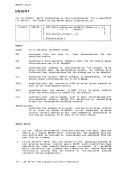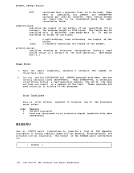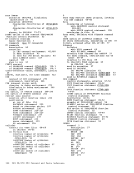should never be typed when the actual command is entered.
underscore
-
braces ( }
brackets []
ellipsis
entered as specified in the format box.
asterisk *
comma
parentheses ()
and filemode. respectively. The combination "fn ft
called the file identifier or fileid.
and they are not enclosed by brackets or
beneath fn, ft, or fm, it indicates that an asterisk may be coded in
that position of the fileid. The operand description describes the
usage of the *.
format
identifiers such as
C
entered.
indicates that either
assumed.
B, or C may be selected. However, if B is
specified.
section 1. Introduction and General Concepts 5






















































































































































































































































































































































































































